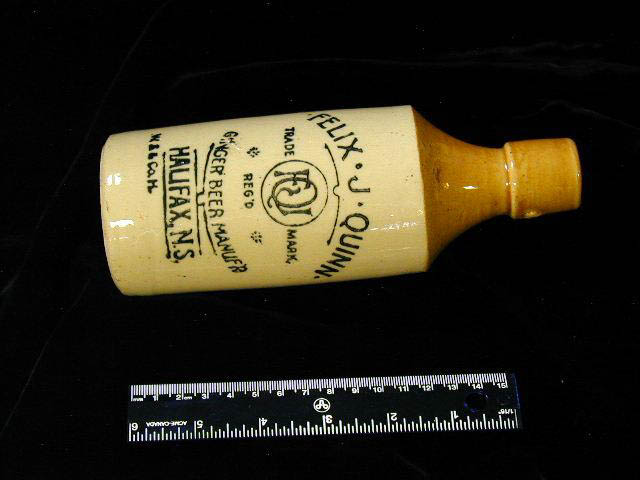“A dream come true – and I’m so happy to share this adventure.”
“My father used to go diving in the Halifax Harbour with Bob Chaulk (who I now get to go with) when I was a teenager, and he’d come back with these weird stories about what he’d seen at the bottom. He’d occasionally return with a bottle that piqued my interest. Dad discovered his “Quinn” bottle over 20 years ago, and now I’ve discovered mine. Because of how astonished I was, I virtually have no reaction in the video. I still can’t believe I found my own.“
Sean McMullen
Between 1888 and 1914, Felix J. Quinn made these bottles in Halifax. Bottles near the end of this range were frequently constructed of glass. The bottles were mostly made in the United Kingdom, but the contents were made in Nova Scotia. In 1835, the Powell family in Bristol, UK created the Bristol-style glazed bottles. The ceramics has a coarse to fairly coarse texture. A buff-colored cloth and a clear, glossy finish distinguished the pottery. The upper half of the jar was dipped in an iron oxide glaze, which gave the upper part of the vase a caramel colour. Beverage bottles and preserve/condiment jars were the most frequent types. Some of these bottles bring over $100.00 at auction.
Terence Bay, the site of Sean’s find, is a small fishing village on the Chebucto Peninsula in Nova Scotia’s Halifax Regional Municipality. It lies 21.2 kilometers from Halifax, on the Atlantic Ocean’s beach. The settlements of Lower Prospect, where the RMS Atlantic disaster happened, and Sandy Cove, where a cemetery, a monument to the wreck, and an interpretive centre are located, are also part of the Terence Bay area.
Dive Report
Saltwater Sean reports the snorkel depth was 5-7 feet and the water temperature was 60 degrees Fahrenheit
Sean McMullen
Follow Saltwater Sean on YouTube and Instagram






